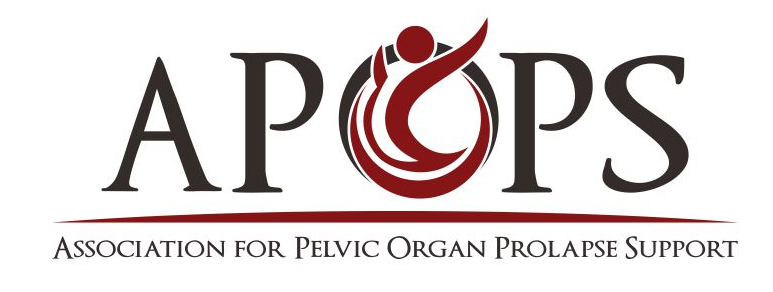Despite thousands of years on medical record, stigma continues to shroud pelvic organ prolapse (POP) in silence. Patients typically experience symptoms such as vaginal tissue bulge, urinary or fecal incontinence, pain with intimacy, lack of sexual sensation, chronic constipation, or tampons pushing out. Women are characteristically embarrassed to disclose symptoms to clinicians; often clinicians inquire ineffectively. The question becomes what should we do to speak to much needed change in POP diagnostics? Clearly clinical fields which provide women’s pelvic health screening need to evolve curricula. The APOPS 2016 Women’s Pelvic Health Congress, taking place in Manchester, UK July 18-19, 2016, and Milwaukee, WI August 18-19, 2016, will present a targeted program of women’s pelvic health that is regularly misunderstood in multiple fields of practice and currently seldom offered to diagnostic clinicians.
Research regularly indicates between 30-50% of women will experience POP in their lifetime.[1] Millions suffer with symptoms they don’t understand, and “discovery upon diagnosis” is the norm for most women. This unsettling dynamic aside, women are seldom screened for pelvic organ prolapse during routine pelvic exams despite childbirth and menopause being the most common causal factors.
Medical records indicate diagnoses and treatments date back nearly 4000 years to the Kahun Papyrus in 1835 BC.[2] Documentation exists of multiple treatments Hippocrates utilized for POP such as inserting a pomegranate into the vagina to hold the uterus in position, or Hippocratic Succussion, shaking women suspended upside down from a ladder with legs tied together for three to five minutes to “encourage” the uterus to return to its normal position.[3] A noteworthy diagnostic clinician practice gap permeates women’s health despite widespread prevalence of pelvic organ prolapse and thousands of years of medical documentation.
Stigma of POP symptoms veils this most common women’s health condition. Patients are often subjected to inappropriate medical tests to determine the cause of symptoms all too seldom recognized as POP. In recent years, a multitude of over-the-counter products, incontinence pharmaceuticals, surgical and nonsurgical medical devices, and medical procedures have been developed to address treatment, but little has shifted regarding stigma, patient awareness, or diagnostic screening protocol. Additionally, lack of routine screening protocol lends itself to insufficient data capture to accurately define POP prevalence.
As the foremost international advocacy agency addressing pelvic organ prolapse, Association for Pelvic Organ Prolapse Support (APOPS) aligns with patients, healthcare, research, industry, academia, and policy makers to evolve and achieve POP directives, bridging all sectors to address much needed advancement in patient health. The APOPS 2016 Women’s Pelvic Health Congress vision aligns with APOPS’s mission to advance global pelvic organ prolapse awareness, guidance, and support, and to innovate universal POP healthcare, education, and research, with protocol to:
Ø Affect patient and clinician POP awareness and understanding.
Ø Affect clinician pelvic floor function health literacy.
Ø Address POP screening procedural practice gap.
Ø Bridge all engaged in the POP sector.
Ø Reduce POP stigma.
The APOPS patient community continues to grow and become increasingly vocal internationally. With a following in every US state and 40 countries, the voices of women APOPS serves globally will soon ask the right questions of clinicians. The concern is whether or not healthcare will be properly educated to appropriately provide the answers. The engagement of key stakeholders representing multiple countries, academic structures, clinician organizations, and health fields is a pivotal and significant first step to evolve clinician diagnostic curricula across multiple sectors simultaneously.
The value to both patient populace and clinician practice cannot be overstated. Toward that objective, APOPS warmly invites clinicians to join us at our UK and US events, with presentations addressing POP & comorbid conditions/symptoms, urinary incontinence, accidental bowel leakage, overactive bladder, Ehlers-Danlos, hysterectomy, imaging, pessaries, misconceptions, standing pelvic screen, when to refer, impact to intimacy, and more.
UK Program: July 18-19, 2016 Manchester, UK
http://www.pelvicorganprolapsesupport.org/program-uk/
UK Registration: http://events.r20.constantcontact.com/register/event?oeidk=a07ec7m7j14c81af75a&llr=4kmlnobab&showPage=true
US Program: August 18-19, 2016 Milwaukee, WI, USA
http://www.pelvicorganprolapsesupport.org/program-us
US Registration:
http://events.r20.constantcontact.com/register/event?oeidk=a07ec7m53cf7d17702d&llr=4kmlnobab&showPage=true
Sherrie Palm, Founder/Executive Director
Association for Pelvic Organ Prolapse Support
http://www.pelvicorganprolapsesupport.org
Sherrie Palm bio: Sherrie Palm is the Founder/Executive Director of Association for Pelvic Organ Prolapse Support (APOPS), author of Pelvic Organ Prolapse: The Silent Epidemic, a speaker on multiple aspects of pelvic organ prolapse (POP) quality of life impact, and an international women's pelvic health advocate. Sherrie’s points of focus are generating global pelvic organ prolapse awareness, developing guidance and support structures for women navigating POP, and bridge building within POP healthcare, research, academia, and industry toward the evolution of POP directives.
1 Barber MD, Maher C. Epidemiology and outcome assessment of pelvic organ prolapse. Int Urogynecol J. 2013 Nov;24(11):1783-90. doi: 10.1007/s00192-013-2169-9.
2 Downing KT. Uterine Prolapse: From Antiquity to Today. Obstetrics and Gynecology International Volume 2012, Article ID 649459, 9 pages.
3 Ibid.



